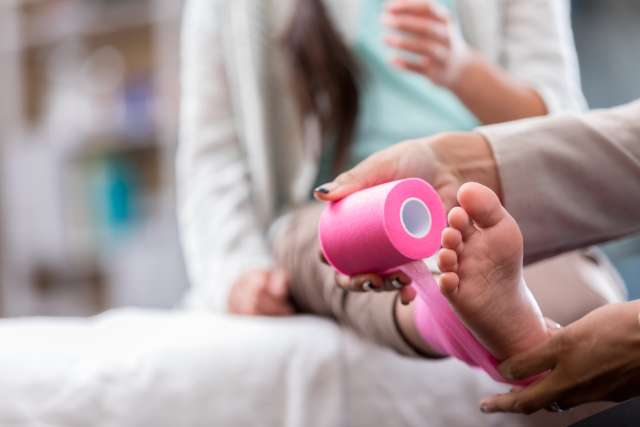Dear Doctors: I sprained my ankle playing soccer. It’s not the first time, and I thought I knew what to do. But as soon as I started to wrap it, I got a bunch of conflicting advice: use ice; use heat; alternate ice and heat; walk on it right away; stay off of it for a week. How do you take care of a sprain?
Dear Reader: A sprain occurs when movement causes a joint to strain or overextend. This stretches or tears the ligaments that hold and stabilize the joint. In more serious sprains, the joint capsule itself can be damaged.
Sprains often occur during sports activities, but they can result from any movement that stresses a joint. Symptoms include pain, swelling, bruising, stiffness and reduced function. If you can’t move the joint, if the area becomes numb or if it can’t bear weight at all, the injury may be more serious than a simple sprain. In that case, it is important to seek medical care.
An ankle sprain that is mild to moderate can be treated at home. The approach is a combination of steps summed up in the acronym PRICE. That is: protection, rest, ice, compression and elevation. Wrapping the ankle with a flexible bandage can help stabilize the joint and create compression, which reduces swelling. Take care that the wrapping isn’t too tight, as that can impede circulation. It is recommended that you rest the sprained joint for the first 72 hours after the injury. You’ll also want to keep it elevated as much as possible during this time, which helps with swelling.
Icing a sprained joint in 10- to 15-minute sessions during the first few days was once standard advice. However, the thinking on this is changing. Cold therapy does ease swelling, but it also reduces blood flow to the region, which is now believed to actually slow the pace of healing. If icing a sprained ankle helps with pain, then feel free to do it. Just be sure to keep each session brief, and never place an ice pack directly on bare skin. Using heat increases blood flow to the area, which can help ease stiffness. Over-the-counter anti-inflammatories should be adequate for the pain of a mild to moderate sprain.
Advice regarding a prolonged period of rest has also shifted a bit. Studies show that a gradual resumption of activity after the first 72 hours, rather than complete rest, promotes faster healing. This typically involves the use of supportive devices such as crutches, a walking cast or a walking boot. The key word here is “gradual.”
Getting back on your feet takes anywhere from a few days to a few weeks, depending on the severity of the sprain. Overstretched ligaments may need just a week or so to recover. But when ligaments have sustained tears, healing can take a month or more. Whatever the degree of a sprain, it is important not to rush things. Unless you give your body enough time to fully heal, you put yourself at increased risk of a repeat injury.
(Send your questions to [email protected], or write: Ask the Doctors, c/o UCLA Health Sciences Media Relations, 10960 Wilshire Blvd., Suite 1955, Los Angeles, CA, 90024. Owing to the volume of mail, personal replies cannot be provided.)





